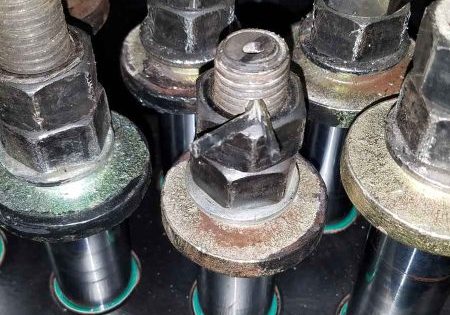National Treasure
Jun 1, 2022
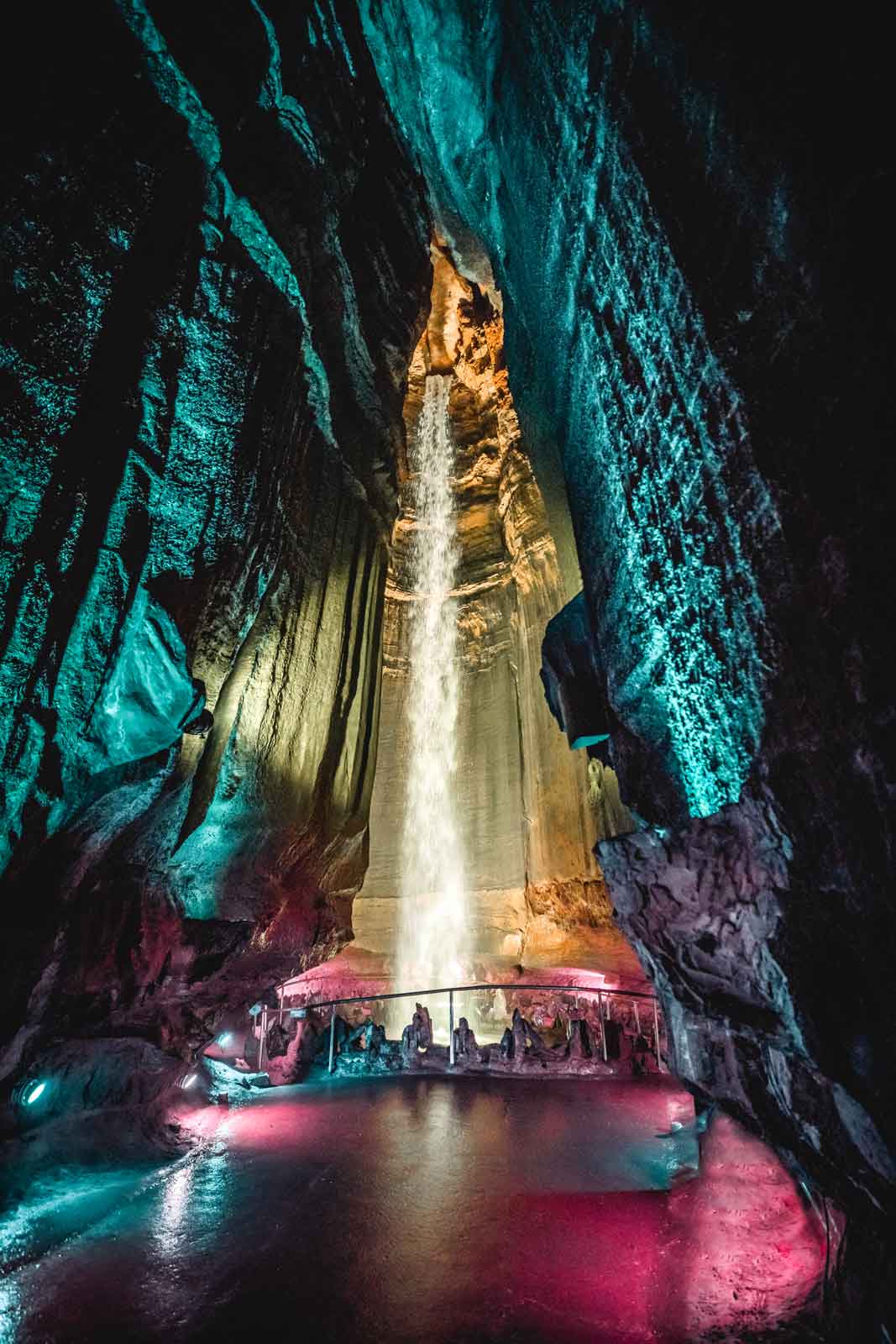
Modernized Westinghouse elevator provides access to Ruby Falls for nearly 100 years.
The serendipitous decision of the Southern Railroad Co. to build a tunnel through Lookout Mountain in Chattanooga, Tennessee, in 1905 led to the birth of a major tourist attraction nearly 25 years later, and an elevator started it all. That’s because tunnel construction sealed off the only natural entrance to the cave deep inside Lookout Mountain, a favorite adventure spot of a young man named Leo Lambert after he moved to Chattanooga from Indiana. As he got older, Lambert never forgot about the cave, and was determined to find a way to return. So, in 1928, he raised money from investors and formed Lookout Mountain Cave Co., which set about drilling an elevator shaft 420 ft down to the main passage. Digging down approximately 5 ft a day, at the 260-ft mark jackhammers burst through into a void that would reveal the magnificent underground waterfall that would come to be known as Ruby Falls. (It was initially described as being 140 ft but, because it originates far beyond the cave ceiling, the attraction has moved away from providing a finite height, observes Ruby Falls Corporate Communications Manager Lara Caughman.) Lambert and members of his crew made their way down a cold, wet, 5-ft-wide hole to check it out up close. It took the pair approximately 13 hr. The next person to see the falls was its namesake: Lambert’s wife, Ruby.
Once the shaft was dug, a steel framework, a Westinghouse elevator running on electricity and an auxiliary gas motor, wooden bridges and steps were installed in 1929.
Once the shaft was dug, a steel framework, a Westinghouse elevator running on electricity and an auxiliary gas motor, wooden bridges and steps were installed in 1929. The roughly 51,000 ft3 of limestone removed to make way for the elevator shaft was used to build the three-story 15th century replica castle called Lookout Mountain Castle and Lookout Tower (viewing area), as well as pathways and a pair of stone arches that remain a popular picture-taking location to this day. The upper portion of the elevator is housed in a 55-ft tall tower on the eastern corner of the castle, and it’s where visitors go if they want to reach the caverns and falls.
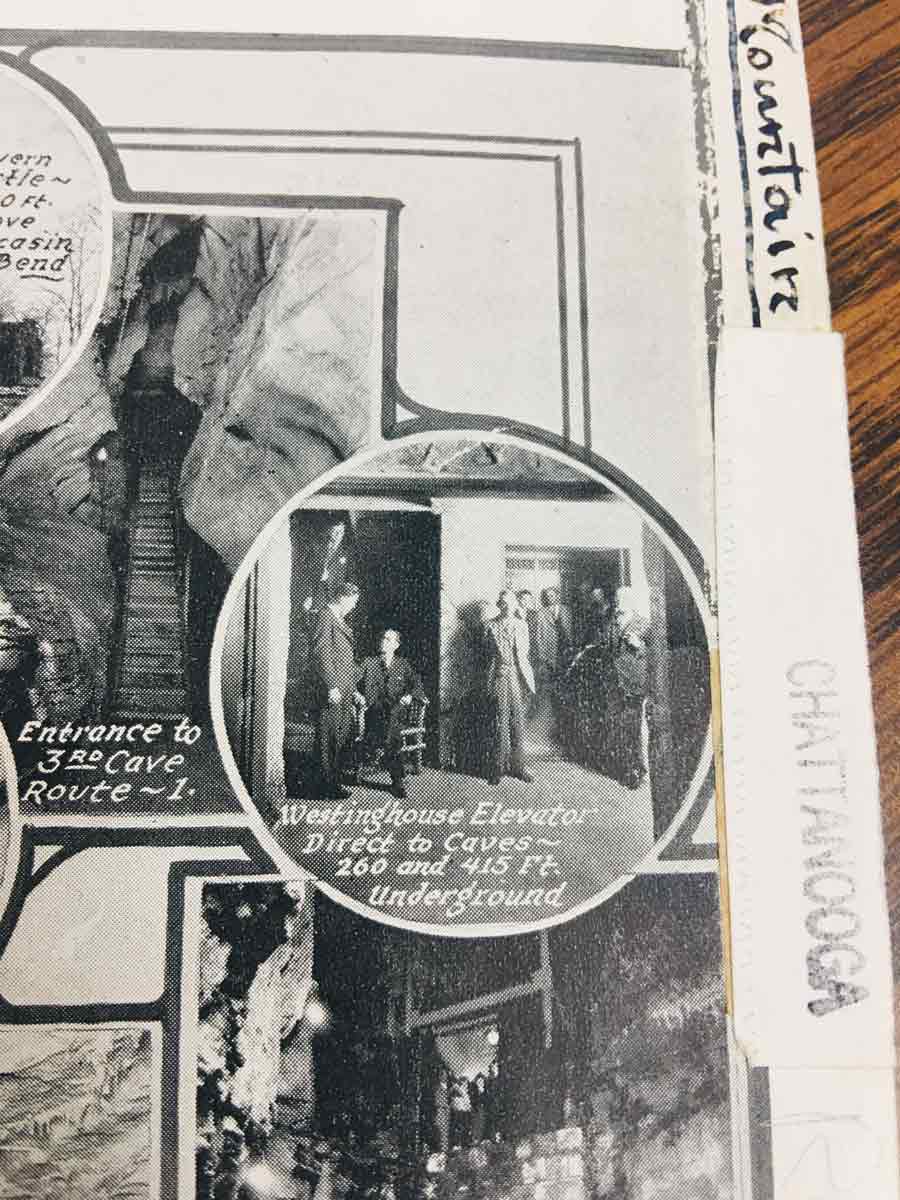
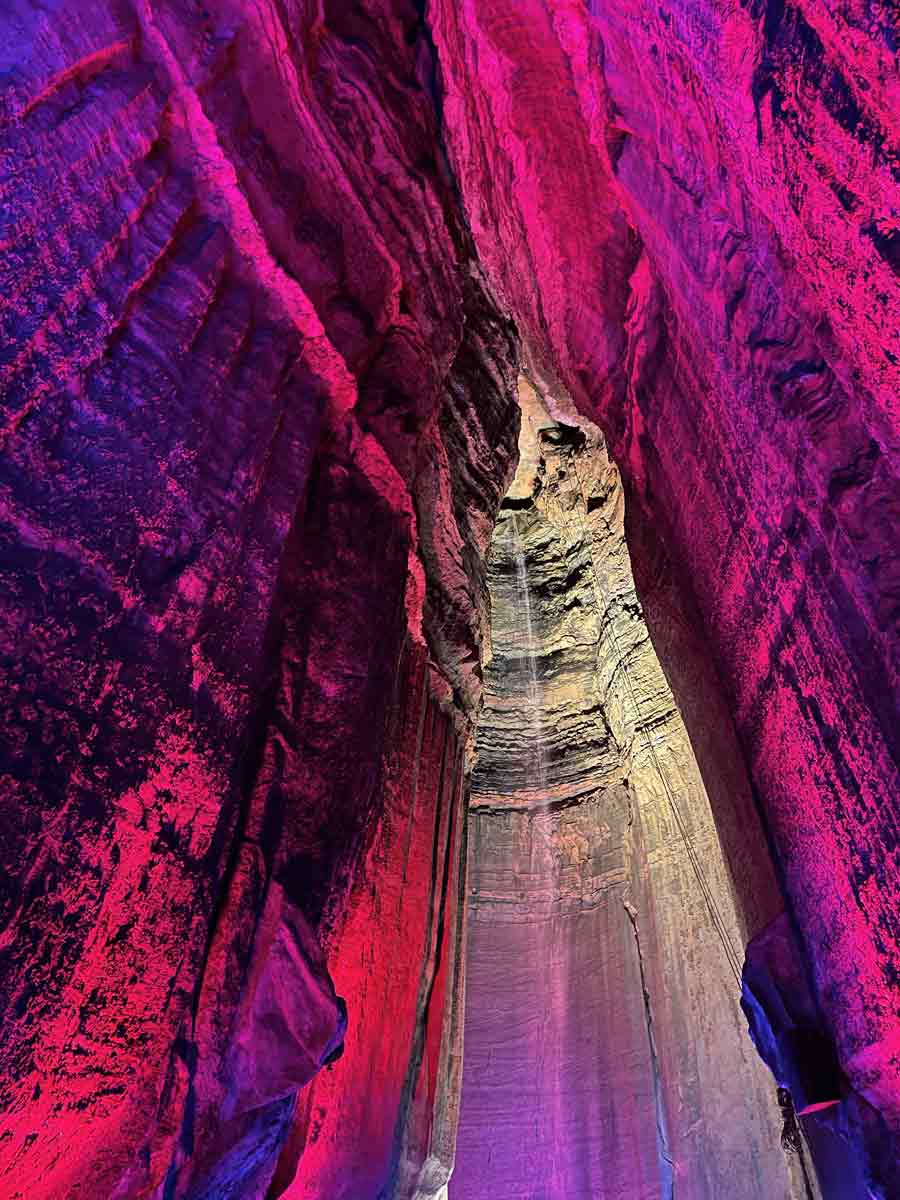

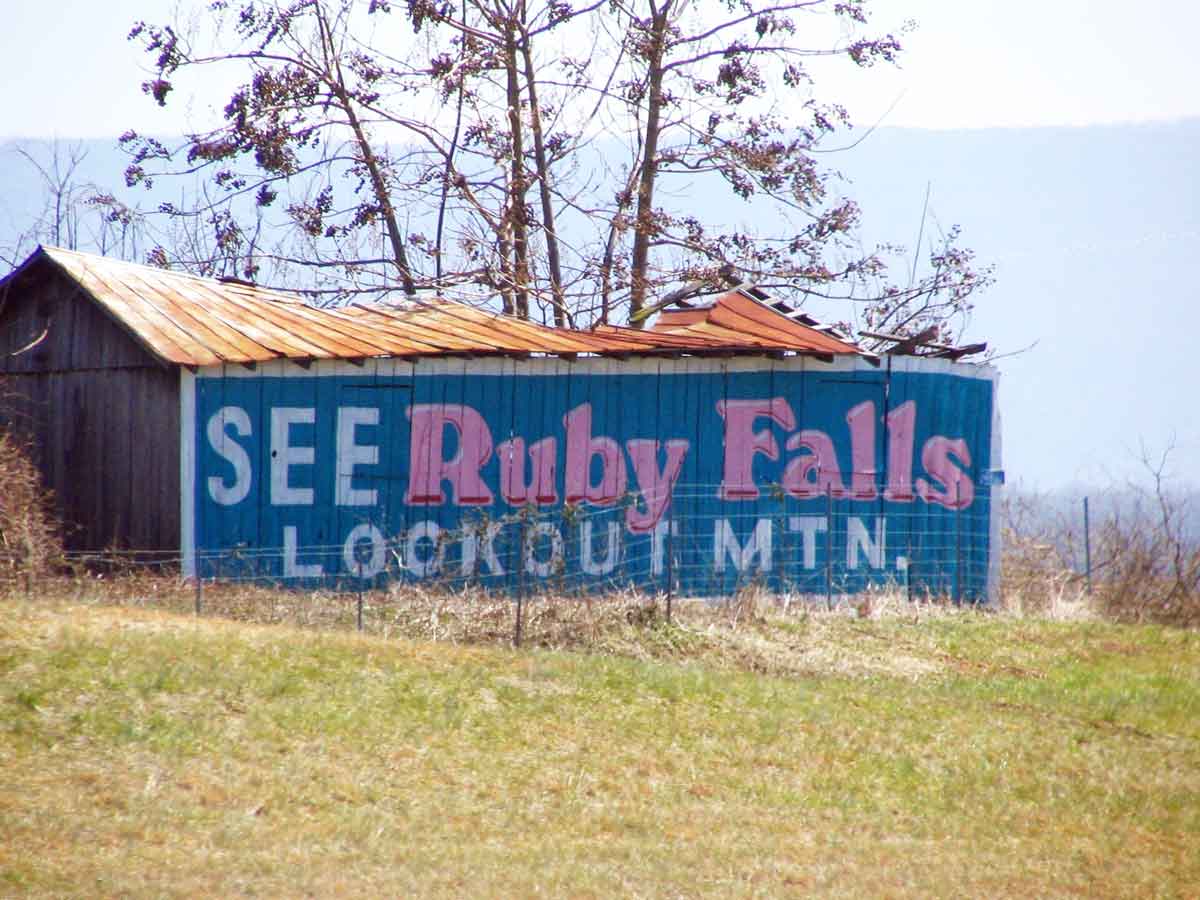
The castle and elevator taking people for tours of two caves — the one containing Ruby Falls at 260 ft down and another limestone cave at 412 ft — launched with great fanfare in 1930. A newspaper report on the grand opening that drew top local officials to the castle elaborated:
“The elevator shaft is built through solid stone and is 412 feet to the bottom. The engineers estimated that [5 million lb] of stone was removed from the shaft. A large part of the stone and dirt has been placed in the caverns to make walkways. A high-speed elevator has been installed at the cost of [US$23,000]. It travels from the top to the bottom of the shaft in [51 s]. Ten people are permitted to ride it each trip. It is equipped with telephones so that the operators and guides can tell just where it is at any moment.”[3]
Today, the elevator has a capacity of 3000 lb, or approximately a dozen relatively large individuals, and travels at 600 ft/min. Large glass interior doors allow guests to see the rockface as they travel up or down. Safety features include an emergency phone video/intercom system, weight-monitoring system and firefighter operation and an elevator cable rope-gripper. The unit is wheelchair-accessible, and one-way trip takes approximately half a min.
The Great Depression and other factors — including soot from the railway coating the interior of the lower cave — led to some bumpy times for the attraction. Tours of the lower were halted after only five years, and Lookout Mountain Cave Co. went bankrupt. Tours of the lower, cave would never again resume, and its elevator access was permanently halted in 2005 by state of Tennessee officials for safety/code compliance reasons, in turn resulting in the length of the elevator shaft being essentially cut in half — going from 412 to 260 ft.
The original 1920s car sling still operates at nearly 100 years old.
After the bankruptcy of Lambert’s company, Ruby Falls would change hands numerous times, first with the 1944 death of the man — Claude Brown — who bought it out of receivership. Brown’s son took over and the property was sold again twice — in 1947 and 1949. The 1949 buyers included Lookout Advertising Co., the entity responsible for the famous and successful advertising campaign that included bumper stickers and — most memorably — large roadside signs, including on the roofs and sides of barns. By this time, the automobile had become Americans’ main mode of transportation, including for leisure, and the signs succeeded in luring visitors. Today, more than half a million people — the majority of whom ride the elevator — visit Ruby Falls each year.
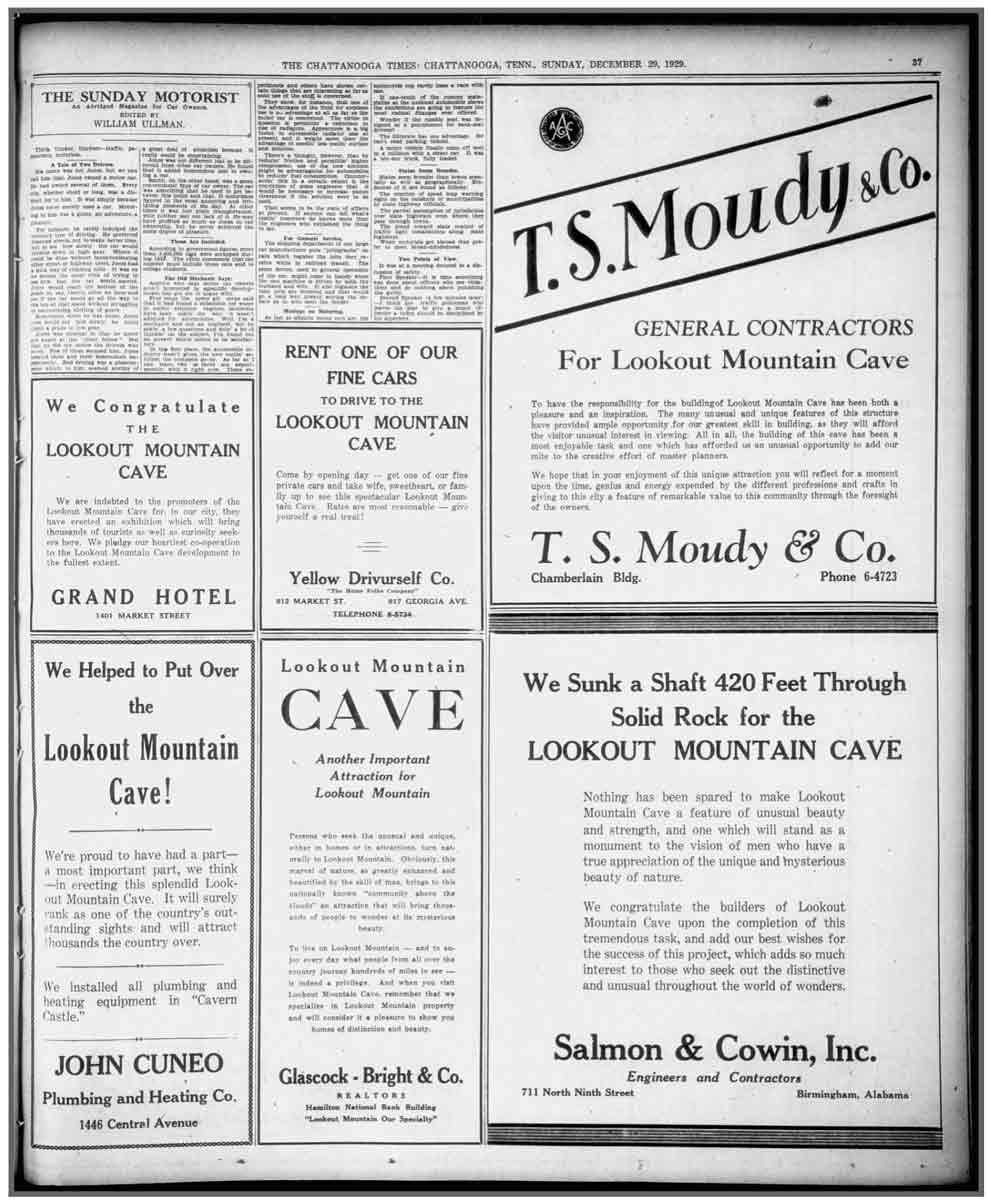
In 1985, when property owner Jack Steiner applied to the U.S. Department of the Interior’s National Park Service to place Ruby Falls on the National Register of Historic Places (NRHP), the elevator was mentioned at least 25 times in his 11-page application. Musing that the elevator may have been the first ever in a commercial cave, Steiner shared that, in 1981, some parts of the elevator were replaced, but the 1929 cab was still in use. The elevator shaft, he said, was now covered in permastone. In the “Statement of Significance” portion of the application, Steiner said:
“Lookout Mountain Caverns and Cavern Castle, popularly known as Ruby Falls, are an excellent example of an early 20th-century commercial tourism complex. The caverns, Cavern Castle, elevator and two arches have retained their integrity and contribute to the significance of the nominated property.”[2]
Steiner succeeded in having Ruby Falls placed on the NRHP on November 26, 1985.
In 1989, Schindler bought Westinghouse’s elevator division, and elevator maintenance shifted from Millar (a division of Westinghouse) to Schindler’s Chattanooga office. Caughman says the unit underwent a “mini mod” in 2013 that included installing a new MCE controller and Americans With Disabilities Act-compliant cab fixtures, along with some cab interior upgrades. The original doors were replaced at some point, but the traction machine was retained.
In addition, the original 1920s car sling still operates at nearly 100 years old, Schindler Chattanooga Branch Manager Kevin York says. Unfortunately, its days are numbered, and it doesn’t look like it will be preserved for elevator enthusiasts to admire. York explains:
“It’s old and rusted from the moisture and humidity in the cave, and it has to be replaced. To get it out of the shaft in the right way, I think we’re going to have to cut it apart, so saving it is probably out of the question. We have to follow the most efficient and safe way to get the old one out and new one in.”
In January 2023, the elevator will undergo its most significant upgrade to date. In addition to a new galvanized Hollister-Whitney car sling and platform, it will include:
- Cab interior design upgrades in a to-be-decided style
- New car operating panels (COPs) from Schindler fixture company Elevator Products Corp., or EPCO
- Hoist ropes supplied by multiple internal vendors
The elevator upgrade will help ensure visitors can enjoy Ruby Falls, a national treasure combining the wonders of man and nature, for many years to come.
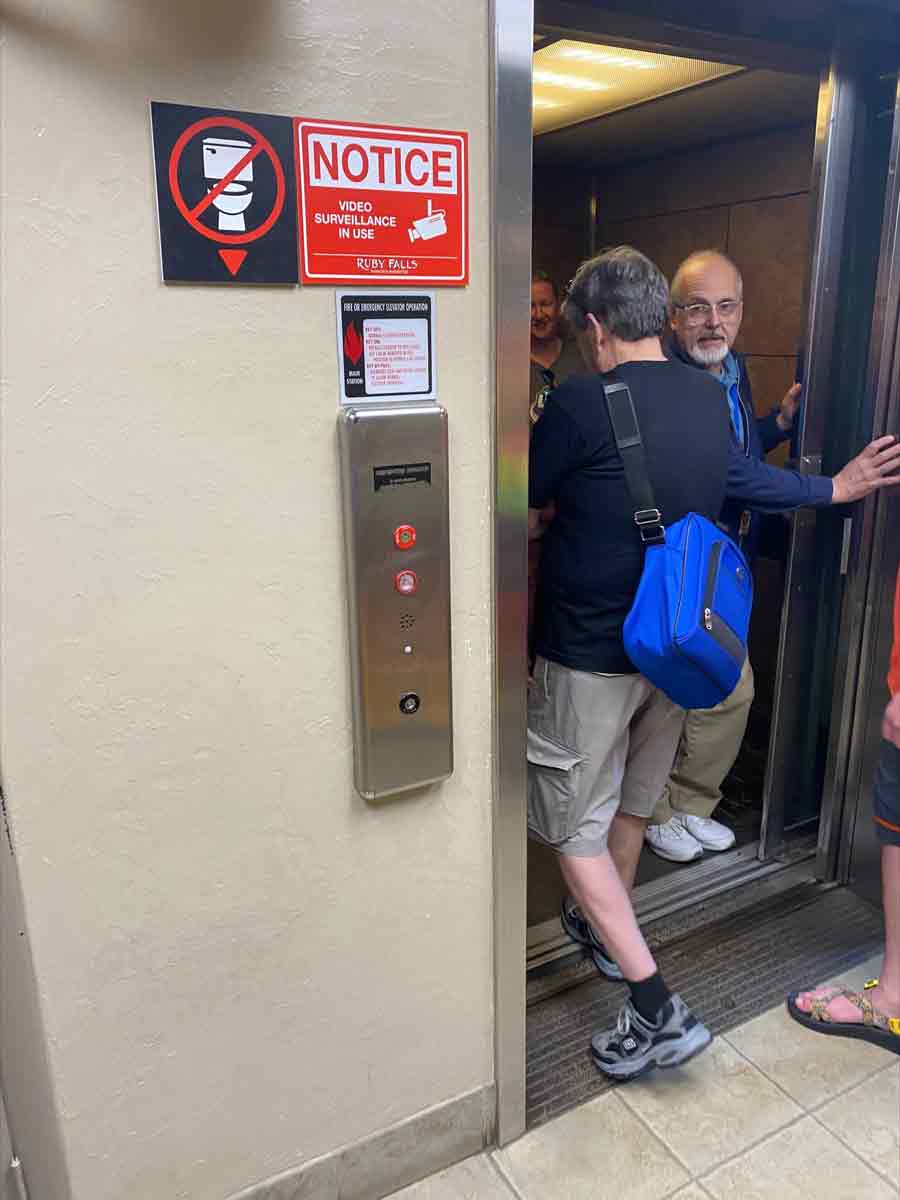
Cave Vs. Cavern
Admittedly, your author — at age 12 — was too frightened of the elevator to “see Ruby Falls,” so she satisfied herself with looking at pictures of the brilliantly colored waterfall, and a T-shirt. Obviously, the waterfall is not naturally bright red, green and other colors. The waterfall, along with the cave numerous rock formations known as stalactites and stalagmites, has been illuminated by colorful lights since the mid-1950s, when operators replaced the original white lightbulbs.[1] Cave lighting transitioned to an energy-efficient LED system more than 12 years ago, Caughman says.
Throughout its history, various parts of the attraction have been referred to as a cave or a cavern — sometimes both. In the earliest decades of Ruby Falls history, the terms were used interchangeably, making matters confusing, says Caughman, who continues:
“Lookout Mountain Cave is technically not a cavern. However, Ruby Falls Cave is a cavern. A quick explanation is that a cavern is a type of cave without any natural openings above ground. Instead, its opening, or openings, are all underground. A cavern is a type of cave and can be called a cave or a cavern, but a cave with a natural opening (meaning an opening above ground) is not a cavern.”
References
[1] “Ruby Falls Secrets Revealed — Hidden History and Why You Should See Ruby Falls,” Coleman Concierge, colemanconcierge.com/ruby-falls
[2] National Register of Historic Places — Nomination Form. Lookout Mountain Caverns and Cavern Castle/Ruby Falls, Jack Steiner, October 16, 1985.
[3] “Lookout Cave’s Scenic Wonder Open to Public,” Chattanooga Daily Times, December 31, 1929.
[4] Ruby Falls 2022 Fact Sheet
Get more of Elevator World. Sign up for our free e-newsletter.








